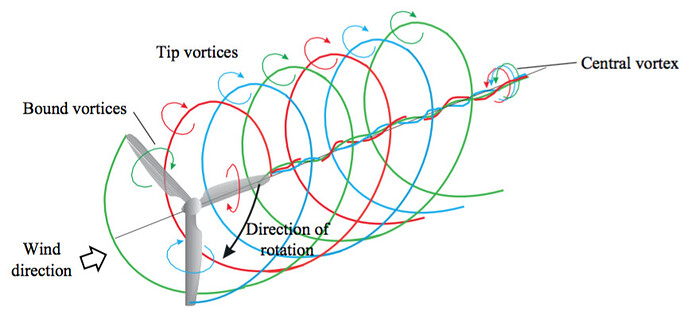Pierre: Kite-reeling seems to be the only remaining AWE idea being commonly pursued. Nobody ever bothered to try a “laddermill”. I debunked many previous outlandish claims, Magenn, Altaeros, etc.
At some point, I was swayed by the claims of Makani - even said it sounded promising, from the claims they were making - I did not realize how bad their latest craft performed until I saw some of their final videos.
All those “smart” people… All those CFD studies, the modeling, the simulations, the advanced design, the number of engineers - How could they get it that wrong? I do not believe they disproved the general concept, just their specific implementation. As I’ve said many times, why do teams try to go so big, so fast? Why not bite off a smaller chunk to start so the inevitable failures do not kill the whole company? Oh well, one more common symptom of the endless P.C. syndrome…
Did you know that citing “a lot of very smart people” is a repetitive symptom of “The Professor Crackpot Syndrome”? Yup, like red spots are a symptom of chicken-pox. Can’t tell you how many times I’ve heard that one. I remember a conversation with one arrogant know-it-all, years ago, where he was talking up a group in a certain country, that he said was developing advanced vertical-axis turbines that were going to make all the regular turbines obsolete. I tried to explain to him that the vertical-axis concept had come and gone decades ago, and was long-disproven, or at least ill-advised by now. His response was “These are some very smart people”. I was thinking “OK but you just said they are pursuing vertical-axis turbines, believing they are superior, but then you said they are “very smart people”. The two statements are in conflict”.
My point is, by the time you are trying to rationalize a claim of future supposed success in a disproven field of endless failure, and you have to threaten with a taunt of “very smart people”, you’re already dead in the water, just showing typical symptoms of a project that is never going to work out.
Kite-reeling? Well it seemed like the most basic idea any kid flying a kite using a reel powered by a DC motor would come up with - power the reel to make life easier, then, hey wait it is making power as it reels out! The part I thought was clever was flying the kite back-and-forth to increase swept area. One red flag I noticed early-on was how many teams jumped in to pursue kite-reeling. I mean, how many teams are needed to check this idea out, really? I compared it to the old graffiti saying I would read on outhouse walls as a kid: “Eat s***. how can a million flies be wrong?” Not that I could identify any specific deal-breaker with the technology, just that it seemed a bit desperate - grasping at straws, and not very imaginative. Kind of a “hail-Mary”, like “We can’t think of, or build, anything better”.
But, as with Makani, the numbers I was hearing DID sound VERY impressive. So I opened my mind to the possibility that kite-reeling had “cracked the code”. I am still open to the success of kite-reeling. That is why, every year or so, I ask yet again “So how is kite-reeling going these days?” I’m not saying there is anything wrong with it when I ask this question. I just ask the question.
In this case, we had containerized, supposedly turnkey, supposedly quickly-deployed kite-reeling systems, with one supposedly shipped to a point of use maybe 6 months ago or so, and as one of the biggest fans of AWE, I’m curious to know how things are going with that system. I mean, has anyone run the system yet? If so, how is it working? If not, why not? Seems to me when asking followup questions after a parade of promotional press-releases is seen as a problem, there may be more at play than just modesty. Too much resistance to such simple questions might be a sign that the hype was just that, and nothing good is emerging as a result. All I did was ask “What’s new today?” Not looking for an argument, just wondering how things are progressing after being exposed to all that “great news”. Hopefully things are going great, everything is working fantastic, and someone would be happy to share the good news. 


